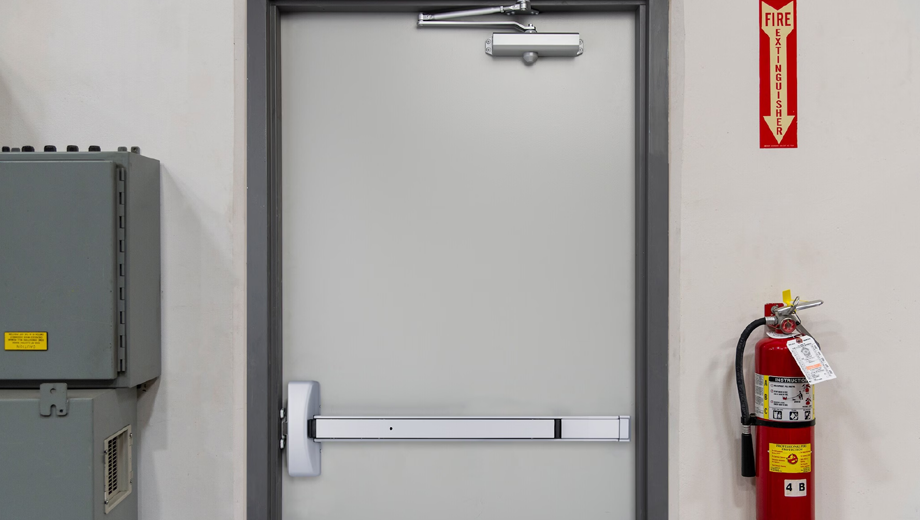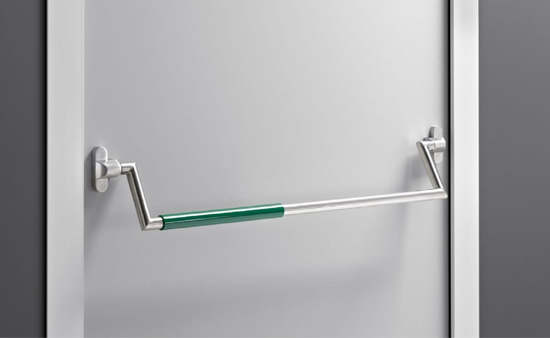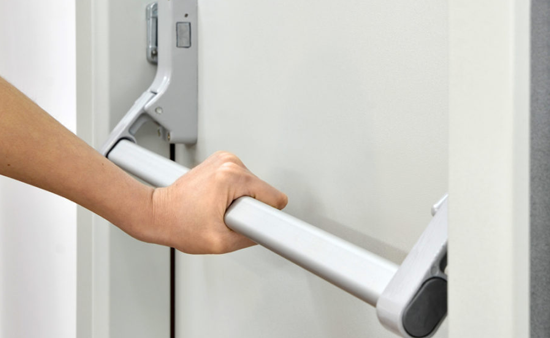Panic Bars: The Essential Safety Feature for Emergency Exits


When it comes to building safety, few features are as crucial as panic bars. Also known as crash bars or push bars, these devices are designed to provide a quick and easy way to open doors in emergency situations, ensuring that people can exit a building swiftly and safely. Whether you’re managing a commercial property, a school, or any public building, understanding the importance of panic bars can help you enhance safety and comply with safety regulations.
What Are Panic Bars?
A panic bar is a type of door hardware that allows people to open a door by pushing a horizontal bar mounted on the interior side of the door. Unlike traditional door handles or knobs, which require twisting or pulling, panic bars require only a simple push to operate. This makes them ideal for emergency situations where time is of the essence and crowds may be panicking.
How Do Panic Bars Work?
Panic bars are designed to be simple and intuitive to use. When the bar is pushed, it retracts the latch mechanism that keeps the door closed, allowing the door to swing open. This action requires minimal force, making it easy for people of all ages and abilities to use, even in stressful situations. The door then automatically re-latches when it closes, ensuring the building remains secure.


Why Are Panic Bars Important?
- Emergency Egress:
- In the event of a fire, earthquake, or other emergency, panic bars enable people to exit a building quickly without fumbling with door handles or locks. This can save lives by preventing bottlenecks at exits and reducing the time it takes to evacuate.
- Compliance with Safety Codes:
- Many building codes and safety regulations require the installation of panic bars on certain doors, especially in public buildings, schools, and commercial properties. Compliance with these codes is not only a legal requirement but also a moral obligation to ensure the safety of building occupants.
- Ease of Use:
- Panic bars are easy to operate, even in low-visibility or high-stress situations. This ease of use is particularly important in emergencies when people may be panicking or unable to think clearly.
- Security:
- Panic bars can be integrated with alarm systems to alert security personnel or emergency services when a door is opened. This adds an extra layer of security while still allowing for quick egress in an emergency.
Types of Panic Bars


- Rim Panic Bars:
- These are the most common type of panic bar, installed on the surface of the door. Rim panic bars are ideal for single doors and are easy to install.
- Mortise Panic Bars:
- Mortise panic bars include a mortise lock within the door itself. They are often used in doors where additional security is needed.
- Concealed Panic Bars:
- Concealed panic bars have the locking mechanism hidden within the door frame, providing a cleaner appearance while still offering the same functionality.
- Vertical Rod Panic Bars:
- These are used on double doors and have rods that extend vertically from the panic bar to the top and bottom of the door, securing it at multiple points.
Where Should Panic Bars Be Installed?
Panic bars should be installed on all doors that are designated as emergency exits. This includes:
- Main Entrances and Exits: Especially in buildings with high occupancy, like theaters, auditoriums, and shopping malls.
- Fire Exits: All designated fire exits should have panic bars to ensure quick evacuation.
- Schools and Public Buildings: Where large numbers of people, including children, need to exit quickly and safely.
- Warehouses and Industrial Facilities: To allow workers to exit swiftly in case of an emergency.
Maintenance and Testing
To ensure that panic bars function correctly when needed, regular maintenance and testing are essential. This includes:
- Regular Inspections: Check that the panic bars are functioning properly and that there is no damage or wear that could impair their operation.
- Testing: Conduct regular tests to ensure the bars retract the latch mechanism smoothly and the door opens easily.
- Lubrication: Keep the moving parts of the panic bar mechanism lubricated to prevent sticking or jamming.


Conclusion
Panic bars are a vital component of building safety, providing a quick and efficient means of egress in emergencies. By understanding their importance and ensuring they are properly installed and maintained, you can help protect the lives of those who use your building. Whether you’re overseeing a commercial property, a school, or any other public space, panic bars are an investment in safety that you can’t afford to overlook.

